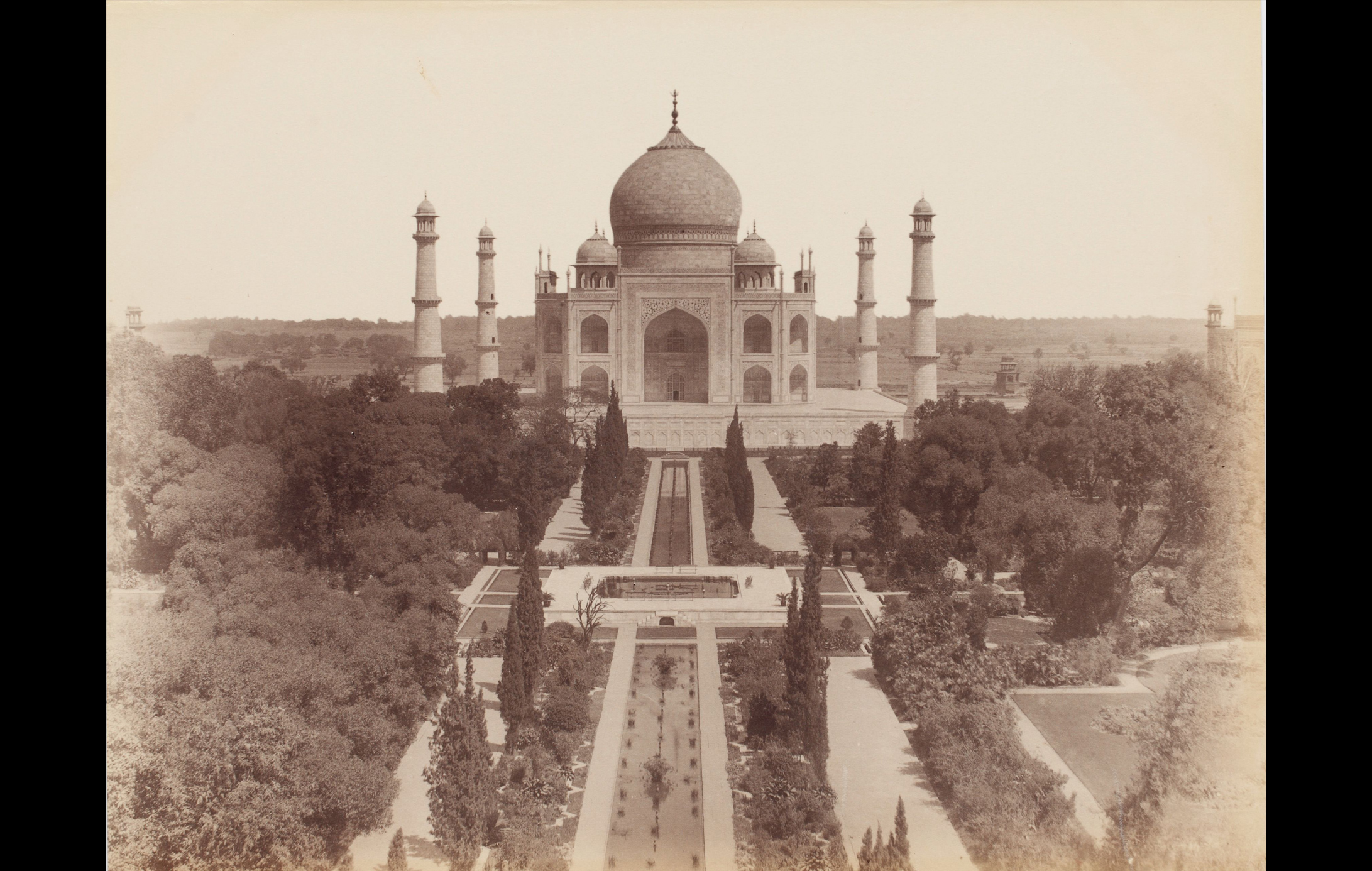
When Arjumand Banu Begum (1593-1631), principal consort of Mughal emperor Shah Jahan, passed away, a marble mausoleum was constructed to house her mortal remains on the south bank of the Yamuna. The Taj Mahal, originally named Rauza-i-Munawarah, took fifteen years from 1632 to be completed.
Marble from Makrana, jasper from Punjab and jade from China were transported to Agra to be used in the building. The complex includes the mausoleum by the river, framed by a mosque and a guest house on opposite sides, and fronted by an elaborate Persianate garden.
To read more, click here.
Title
The Taj Mahal, AgraPeriod
late 19th century - early 20th centuryPhotographer
UnidentifiedDimensions
H: 21.5 cm x W: 27.5 cmAccession No.
2016.4.170When Arjumand Banu Begum (1593-1631), Mughal emperor Shah Jahan's principal consort, passed away, a marble mausoleum was constructed to house her mortal remains on the south bank of the Yamuna. The Taj Mahal, originally named Rauza-i-Munawarah, took fifteen years from 1632 to be completed. Marble from Makrana, jasper from Punjab and jade from China were transported to Agra to be used in the building. The complex includes the mausoleum by the river, framed by a mosque and a guest house on opposite sides, and fronted by an elaborate Persianate garden.Genre: Photography
